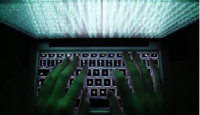-
U.S. to help protect private companies from malicious cyberattacks
The U.S. government said it will help protect private companies from cyber attacks. DHS secretary Janet Napolitano said a system is being developed which will monitor Internet traffic directed to critical infrastructure businesses and block attacks on software programs.
-
-
Panel's draft bill shields DHS funds
A house panel introduced a bill last week that will protect DHS from budget cuts facing other domestic agencies under the house’s budget plan. This will allow the department to hire 1,600 new agents at Customs and Border Patrol agency, replace cuts to local and state governments, boost spending on cybersecurity, and abandon cuts to the Coast Guard.
-
-
Cybersecurity framework for critical infrastructure: analysis of initial comments
On 12 February 2013 President Obama issued the “Improving Critical Infrastructure Cybersecurity” executive order, which called for the National Institute of Standards and Technology (NIST) to work with industry to develop a voluntary framework to reduce cybersecurity risks to the nation’s critical infrastructure, which includes power, water, communication, and other critical systems.
-
-
Criminals may use new channels to trigger mobile malware

Researchers have uncovered new hard-to-detect methods that criminals may use to trigger mobile device malware that could eventually lead to targeted attacks launched by a large number of infected mobile devices in the same geographical area. Such attacks could be triggered by music, lighting or vibration.
-
-
Obama administration shifting cybersecurity legislative strategy

The Obama administration’s has shifted its cybersecurity legislative strategy. Rather than emphasize DHS-monitored regulations – an approach which stalled in Congress last summer because of Republican opposition — the administration is focusing on getting Congress to help promote the voluntary adoption by industry of standards being developed by the National Institute of Standards and Technology (NIST) following a February 2013 executive order signed by President Obama.
-
-
New software protects networked control systems from cyber attacks
Researchers have developed a software algorithm that detects and isolates cyber-attacks on networked control systems — which are used to coordinate transportation, power, and other infrastructure across the United States.
-
-
Wave of cyberattacks targets American energy companies

A new wave of cyberattacks has been hitting American corporations, and federal officials, say the attackers, who reside somewhere in the Middle East, are trying to sabotage these corporations. The majority of the targets have been energy companies, and the attacks are trying to take control of company’s processing systems.
-
-
Small, medium businesses suffer record levels of cyber attacks
More small businesses than ever are facing the threat of losing confidential information through cyberattacks, according to research published today by the Department for Business, Innovation and Skills (BIS).
The 2013 Information Security Breaches Survey has shown that 87 percent of small businesses across all sectors of the U.K. economy experienced a breach in the last year. This is up more than 10 percent and cost small businesses up to 6 percent of their turnover, when they could protect themselves for far less.
-
-
Canadian company provides software to U.S. intelligence agencies
A Canadian company has spent the last few years locking up contracts to provide security software to U.S. federal agencies such as the NSA, CIA, and FBI. The company moved from the United States to Canada because the Canadian government gives tax credits for high-tech companies coming to Canada, and Canadian government agencies help the company break into new markets by sponsoring his company in international conferences. It was in one of these conferences that he once met “some NSA folks.”
-
-
U.S.: China orchestrating broad cyberattack campaign against U.S.

The Obama administration accused China’s military of orchestrating a campaign of cyberattacks against American government computer systems and defense contractors for the purpose of identifying “military capabilities that could be exploited during a crisis.” Cyber experts estimate that about 90 percent of all cyberattacks in the United States originate in China, but these estimates have typically been offered by private-sector experts. The Pentagon’s annual report to Congress, released Monday, is the first government document specifically and explicitly to assert that the People’s Liberation Army (PLA) is behind a sustained, systematic campaign of cyberattacks on the United States in an effort to gain a strategic advantage over the United States. The report also pointedly notes that Chinese investments in U.S. companies aim to help this cyberattacks campaign.
-
-
Governments, businesses should be “cyber-risk intelligent”
Cyber-threats must require governments and businesses to be “cyber-risk intelligent.” Three general flows of information determine an organizational frame for cyber-risk intelligence: one that encompasses the awareness of the IT enterprise and its apparent health; a second that brings internal business activities into view; and a third that encompasses broader geopolitical and economic forces.
-
-
McCaul to draft cybersecurity bill
House Homeland Security chairman Michael McCaul (R-Texas) said he was drafting his own cybersecurity bill, which will define the role of DHS in sharing information with private companies about cyber threats. McCaul hopes to agree on a compromise with the White House, which threatened to veto the bill.
-
-
U.S., China in high-level military talks
Representatives of China and the United States met on Monday for the highest-level military talks between the two counties in almost two years. In the meeting, a senior Chinese general pledged to work with the United States on cybersecurity because the effects of a major cyber attack “may be as serious as a nuclear bomb.”
-
-
White House threatens to veto House cybersecurity bill
The White House on Tuesday threatened to veto the cybersecurity bill drafted by the House of Representatives. The house is expected to vote on the bill later this week. The cybersecurity bill died in the Senate last August after the White House said it would veto the bill.
-
-
U.S. Army weak on mobile devices security

The U.S. Army has developed a mobile strategy to guide its adoption of mobile devices. A Department of Defense audit found that the Army has been lax in developing security guidelines for the use of the thousands of mobile devices now in service, and that these already-weak and insufficient security guidelines are inconsistently implemented.
-
More headlines
The long view
Researchers Develop AI Agent That Solves Cybersecurity Challenges Autonomously
New framework called EnIGMA demonstrates improved performance in automated vulnerability detection using interactive tools.
